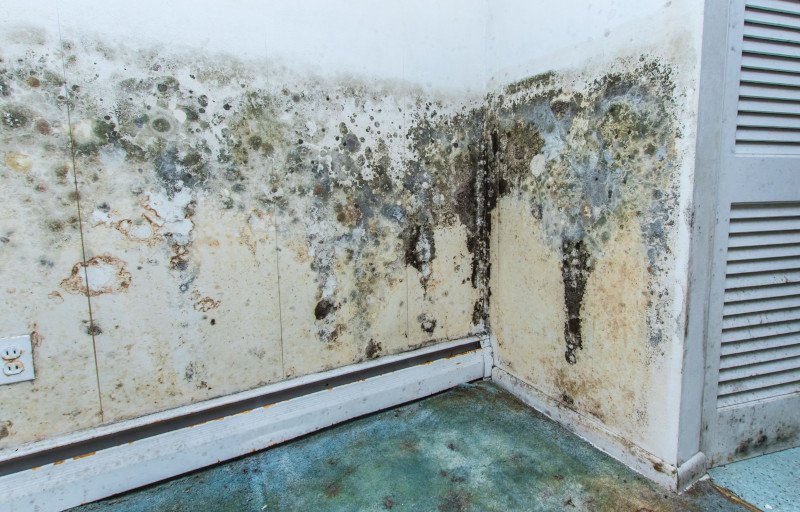Don't hesitate to call us 24/7 for all your
Mold Remediation issues
Our team of certified professionals is ready to respond to your emergency at any time
Get Rid of Mold and Breathe Easy in Your Home
Finding, containing, and removing mold from a building are all steps in the mold remediation process. Mold remediation is necessary to keep a safe and healthy indoor environment. Mold can cause both property damage and a number of health problems if it is not treated. Identifying the extent of the mold growth, containing the affected area to prevent further spread, removing the mold using specialized tools and cleaning solutions, and taking precautions to stop further mold growth are typical steps in the mold remediation process.
American Bio-Clean is a trained and equipped to handle mold removal safely and effectively, using industry-standard techniques and equipment to ensure that all traces of mold are removed from the affected area. Since prolonged exposure to mold can cause serious health problems like respiratory problems, allergic reactions, and in some cases neurological damage, it is crucial to address mold issues as soon as they are identified.
Mold inspection is a crucial step in maintaining indoor air quality and preventing mold-related health problems. Mold is present everywhere in the natural environment, but it becomes a problem when it starts growing indoors. Moisture control is the best way to prevent mold growth.
The mold inspection process typically begins with a visual inspection by a mold inspector to detect any visible signs of mold growth, leaks, or moisture problems that could be contributing to mold growth. The inspector may also use specialized tools, such as cameras, to access restricted areas .

Inquiring about any current or past problem conditions, such as humidity or condensation problems, moldy odors, past or present roof leaks, plumbing leaks, or any visible mold observed is an important step in diagnosing a potential mold or indoor air quality problem. Identifying and classifying mold is a specialized expertise that is best addressed by a mold specialist. Home inspectors may report visible mold, but it will be reported in the Non-Scope section of the report as a mold-like substance.
Performing a mold inspection can help determine the presence of mold and identify the type of mold that is present, allowing appropriate measures to be taken to address the problem. A mold inspection should be performed regularly to prevent potential mold formation before it turns into an infestation.
Mold inspection is an important process to detect and prevent indoor mold growth, maintain indoor air quality, and prevent mold-related health problems. The inspection process typically involves a visual inspection by a mold inspector, specialized tools, and inquiring about any past or current problem conditions. Regular mold inspections should be performed to prevent potential mold formation.
Our team of certified professionals is ready to respond to your emergency at any time
Mold is a common problem that can cause property damage, and homeowners often wonder whether their insurance will cover the cost of repairs. Here’s what you need to know about mold and property damage insurance coverage, as well as the claims process.
First, it’s important to note that homeowners insurance policies generally cover mold damage only if it’s caused by a covered peril, such as accidental water damage. If the mold growth source cannot be associated with any damage covered by insurance, an insurer will likely not cover for mold damage.
The first thing you should do if you need to submit a mold claim is to stop the leak or water source as soon as you can to stop further damage. Then, you should get in touch with your insurance provider and report any water damage or mold in your home as soon as possible. Be sure to include proof of the damage, such as photos and videos.
You must show that the mold damage was unexpected and accidental at the time you discovered it, and that you informed your insurer right away, in order to successfully file a mold claim. The average cost to remove mold from a building is between $15,000 and $30,000. This is a time-consuming and expensive process. Sub-limits, which are restrictions on a specific kind of coverage, are frequently used by insurers to offset these expenses.
To make sure that you submit your paperwork within the property damage claim time limit, it’s crucial to start the mold damage claim process as soon as you can. Before submitting your claim, check your paperwork with an agent to make sure all of your information is correct, thorough, and filed correctly.
In conclusion, even though certain perils that cause mold damage may be covered by homeowner’s insurance policies, it’s crucial to take quick action and carefully follow the claims process to guarantee a successful claim. Make sure to get in touch with your insurer and offer proof of the damage to back up your claim.
